The Media Facades Summit 2014 brings together a mix of industry speakers with academics and experts presenting projects and discusses approaches for designing and building media facades. The summit is part of the
Luminale 2014, which runs in parallel to the Light+Building event taking place in Frankfurt in April 2014.
For the first time, this years Summit will offer a one-day
conference (2 April 2014) at the German Architecture Museum followed by
one-day workshop (3 April 2014) at the Städelschule. An evening keynote by
Ben van Berkel will wrap up the two-day event. Additional to the conference and the workshop, the installation ‘Orchestrating the depth of light’ at the city centre at the Roßmarkt will showcase a state-of-the-art media architecture installation, a
guided tour will give a chance to see the installation with the design team.
Registration
Registration is not required but would be appreciated for catering purposes:
About the Summit
Through significant progress in LED engineering, the past years have witnessed an increasing development of media facades and media architecture, which merge buildings and light spots. Buildings thereby increasingly function as media screens or turn in to animated architecture. Most recent examples in this field include the Hanjie Wanda Shopping Centre in Wuhan, the new Ars Electronica Centre in Linz or the installation by the event organisers ‘Orchestrating the depth of light’ shown at the Luminale 2014 in Frankfurt. Due to the decrease in the price for LEDS and their constant increase in luminosity, one can expect in the next years further progress in this process of fusion, together with its integration into contemporary architecture, but also heated discussions about the usefulness or uselessness of these developments. The Media Architecture Institute aims at fostering discussion about this topic and directing it on to the right tracks. Since 2006 we have maintained mediaarchitecture.org to collect examples of such projects and analyse their technical background, as well as their creative potential, but also possible risks for the cityscape.
The Media Facades Summit 2014 contributes to this discourse around media architecture by showcasing and discussing latest trends and developments in the field. A series of lectures panel discussions will deal with the following questions:
- What is the impact of media facades on architecture?
- Which part does technology (for example LED technology) play in the design process?
- What are the effects of media facades on the perception of a city?
- How can citizens become involved in the process?
- How can benefits and risks of media facades be assessed?
- What are sustainable considerations of this technology?
- What are current trends and future directions?
Program
↑ Back to top
2 April 2014
3 April 2014
Summit
↑ Back to top
2 April 2014, 9:00-16:30
Deutsches Architekturmuseum
The summit will be held in English.
Morning
Research and Innovation
Culture and Societies
Architectural Explorations and Experiments
Location of the Summit
Deutsches Architekture Museum
Schaumainkai 43
60596 Frankfurt
Guided Tour of ‘Orchestrating the depth of light’
↑ Back to top
2 April 2014, 17:00-19:00
Roßmarkt, Frankfurt
The tour will depart from the entrance of the Deutsches Architekturmuseum.
| 17:00-17:30 |
Tour of the installation ‘Orchestrating the depth of light’, leaving at the entrance of the Deutsches Architekturmuseum, Schaumainkai 43 |
| 17:30-18:30 |
On-site Discussion and Q&A |
| 19:00-21:00 |
Finissage drinks
Städelschule, Dürerstrasse 10 |
Location of ‘Orchestrating the depth of light’
Roßmarkt, 60311 Frankfurt
Workshops
↑ Back to top
3 April 2014, 9:00-17:00
Städelschule, Dürerstrasse 10
The two workshops are chaired by Dr Alexander Wiethoff and Marius Hoggenmüller (LMU Munich) (Morning session) and Dr Tobias Ebsen (Afternoon session). Both workshops are independent but complementary in the discussed context.
| 9:00-9:30 |
Registration |
| 10:00-13:00 |
Workshop 1: Prototyping Interactivity with Media Facades
Dr Alexander Wiethoff |
| 13:00-14:00 |
Lunch Break |
| 14:00-17:00 |
Workshop 2: Open Source Media Architecture
Dr Tobias Ebsen |
Prototyping Interactivity with Media Facades
Media Facades provide a great potential as interactive gateway between citizens and buildings. However, architects and designers might not always be able to prototype even early installations of interactive media architecture timely and explore the design opportunities that these systems provide because till today methods and tools in this domain are hardly available and still demand high technical expertise.
We share our design process approach using prototyping tools that help to co-design and pre-test interactive media façade installations in conjunction with potential users in their urban environment. The proposed toolkits allow fast replication and prototyping iterations while involving a broad audience to investigate what type of interface proposal has the potential to be successful.
Open Source Media Architecture
The Open-Source movement has existed for at least 15 years, but has recently gained even more popularity as artists and designers are adopting free and open tools to speed up the process of developing digital artifacts and artworks. This movement has also spread into the physical world of hardware with the notion of Open-Source Hardware, sharing and collaborating on drawings and plans, and utilizing new low-cost manufacturing techniques like 3D printing and laser-cutting. Open hardware has also been a philosophy behind electronics prototyping platforms like the Arduino and Raspberry PI, which have made physical computing even more accessible.
Media Architecture installations have, on the contrary, often been realized through costly hardware and software, based on proprietary protocols and generally not open to “hacking” or artistic appropriation. But this has mainly been due to a lack of open tools and communities to support it.
In this workshop, we will discuss the possibilities for the Open-Source philosophy as a new potential for opening the world of Media Architecture to a wider community designers, artists, and hobbyists. By providing a few simple tools and platforms, we may support new practices and more diversity in the field of Media Architecture.
Keynote
↑ Back to top
3 April, 19:00-20:00
Städelschule, Dürerstrasse 10
The evening keynote by Ben van Berkel will reflect on recent developments of media facades and media architecture in the last two years by presenting projects from UNStudio and van Berkels view on the topic.
| 19:00-20:00 |
Evening Keynote
Prof. Ben van Berkel |
| 20:00-21:00 |
Finissage drinks
Städelschule, Dürerstrasse 10 |
Location of the Workshops and Keynote
Städelschule, Dürerstraße 10
60596 Frankfurt
In the room next to the Mensa. Please follow the signs.
Sponsors
↑ Back to top





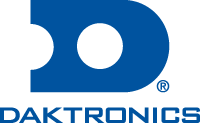



Media Partners
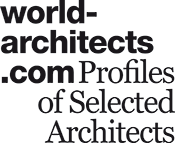
Speaker Biographies
↑ Back to top
Prof. Ben van Berkel
Städelschule Architecture Class, Frankfurt
UNStudio, Amsterdam
Mirco Becker

Founder,
informance
Städelschule Architecture Class, Frankfurt
Mirco Becker is Guest Professor for Architecture and Performative Design at the Städelschule Architecture Class, Frankfurt. He holds an M.Arch degree from the AA. In 2012 he founded
informance, a Berlin based design-integration consultancy for the building industry. A particular interest in computational geometry in architecture has been pursued before with Zaha Hadid Architects, Forster & Partners SMG and KPF’s Computational Geometry Group which he lead for 5 years as a Senior Associate Principal.
Prof. Johan Bettum
Städelschule Architecture Class, Frankfurt
Bernd Clauß
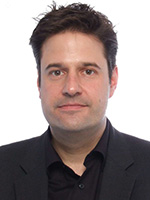
Zumtobel
Bernd Clauß Dipl. Ing. (FH) Construction Management, Master Eng. in Project management, is heading the global façade business development for Zumtobel lighting based in Hong Kong. He has perennial experience and background in project management of façade construction projects. Amongst his wide experiences in LED façade & architecture lighting, he was project manager of the PLDA award-winning “Cheonan Galleria” in South Korea, the World Architecture Lighting Award winning “Rookery Building” of Chicago and guest speaker at a number of international events including Media Architecture Biennale 2010 Vienna.
Dr Tobias Ebsen
Media Architecture Institute, Copenhagen
Tobias Ebsen is a researcher, designer and artist working with digital media installations. He has produced and collaborated on a large number of projects, exploring the intersections of digital technology, art, and public spaces. Among these projects are the lighting design for the Denmark Pavilion for the 2010 World Expo in Shanghai. The work has mainly focused on the architectural and material potentials of technology, where interaction and perception is situated and embedded in a physical context. Tobias Ebsen holds a PhD degree from Aarhus University in Denmark at the Department for Aesthetics and Communication. His dissertation titled “Material Screen” investigated the notion of “materiality” as an artistic approach in media art and media architecture. He is currently based en Copenhagen, where he works independently with designing and implementing media installations. Tobias Ebsen has been a member of Media Architecture Institute since 2012.
Dr M. Hank Haeusler
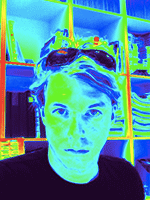
Media Architecture Institute, Sydney
University of New South Wales, Sydney
Dr M. Hank Haeusler Dipl.-Ing. (Fh) / PhD (SIAL/RMIT) is a Senior Lecturer in the School of Architecture at the University of New South Wales, Sydney, Australia. Haeusler is known as a researcher, educator, entrepreneur and designer in media architecture, digital technology, interaction design and ubiquitous computing and author of five books such as the seminal Media Facades – History, Technology, Content (avedition, 2009); several book chapters and conference papers. He has taught and lectured in Europe, Asia, North America and Australia at several universities and conferences and is director of the Media Architecture Institute, Vienna / Sydney.
Marius Hoggenmüller
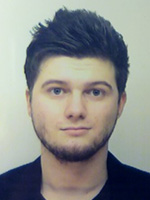
Ludwig Maximilian University, Munich
Marius Hoggenmüller studies Media Informatics at the University of Munich (LMU). In his bachelor thesis, he investigated methods and tools for prototyping interactive media architecture along with a media facade installation in the Olympic Village in Munich (2013). Currently, he is working as an academic assistant at the chair of Media Informatics, inter alia developing the interactive content for the installation “Orchestrating the Depth of Light”.
Tac Lion
AHL
Veronika Pauser
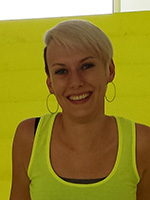
Ars Electronica Futurelab, Linz
Veronika Pauser is very experienced as a researcher in the fields of graphics computing and interaction design. Moreover she has deep knowledge about scientific processes, methodologies and a strong connection to the scientific community. In addition to her master studies in Interface Culture at the University of Art and Design Linz, she did a Master of Science in engineering in Digital Media at the University of Applied Sciences in Hagenberg. Due to her high interest in emerging topics on the nexus of art and technology, she became a member of the Ars Electronica Futurelab, where she is mainly responsible for project managing, especially in the project execution planning of EU FP7 projects. Aside this, the main focus of her work is the design of interactive installations and performances at the borderline of art and technology.
Susa Pop

Connecting Cities, Public Art Lab, Berlin
Susa Pop is an urban media curator and producer based in Berlin. In 2003 she founded Public Art Lab (PAL) as a network of experts from the fields of urban planning, new media arts and IT. Susa Pop is interested in creative community building through networking art projects that catalyse communication processes in the public space. She initiated most of the PAL projects like the Connecting Cities Network, Media Facades Festivals, Mobile Studios and Mobile Museums. She also speaks worldwide at conferences and workshops on urban media and is a lecturer at several universities like University of Potsdam / European Media Science, SRH Berlin / International Business Management, City planning, Leuphana University, Lueneburg. In 2012 Susa Pop published the book Urban Media Cultures.
Tapio Rosenius
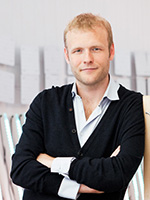
Lighting Design Collective
Tapio Rosenius is the founder of Lighting Design Collective (LDC). The company is based in three studios in Europe (Madrid, London & Helsinki) and operates globally with a network of collaborators. LDC specializes in customized architectural lighting solutions and light art with a uniquely integrated portfolio covering cutting-edge services such as digital content creation, software development and design strategies. Originally from Finland, Tapio is a designer and an artist with completed projects in 23 countries in the Europe, Africa, Asia and Middle East. His work has been recognized with numerous awards from the fields of lighting design and art. He holds a Master of Science in Light & Lighting degree from UCL Bartlett University, London and a Medianomi in Lighting Design from Tampere School of Arts and Communication, Finland. He regularly lectures at universities, trade fairs and professional conferences about lighting design for the built environment.
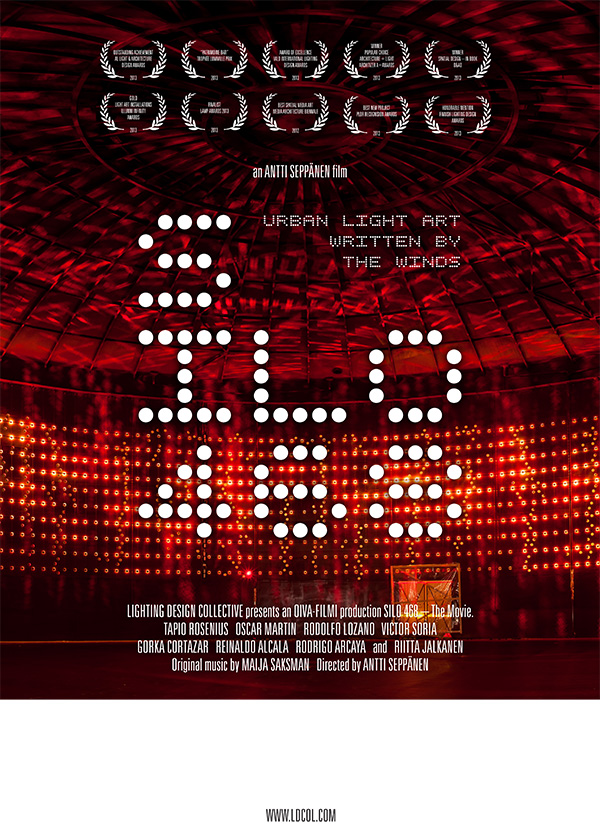
Peter C. Schmal
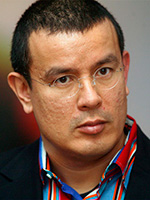
DAM, Frankfurt
Peter Cachola Smal, architect and critic, is the director of Deutsches Architekturmuseum (DAM, German Architecture Museum). He has been a member of various juries, such as the European Union Prize for Contemporary Architecture – Mies van der Rohe Award, the European Architectural Photography Prize and the House of the Year award. He also organizes own awards at the DAM, such as the Internationaler Hochhaus Preis (International Highrise Award), the DAM Preis für Architektur In Deutschland (DAM Prize for Architecture in Germany) and the DAM Architecture Book Award. The range of exhibitions and programs at the DAM include topics as
New Urbanity: the European City in the 21 Century,
Urban Green: Contemporary European Landscape Architecture and projects with international partners such as
Patent Construction: New Architecture made in Catalonia,
Becoming Istanbul,
Megacity Network: Korean Contemporary Architects and
M8 in China: Contemporary Chinese Architects. He was the Commissary of the German Contribution to VII. International Architecture Biennale Sao Paulo in 2007, as well. Cachola, who has already been a member of the Jury for the European Prize for Urban Public Space in 2010 and 2012, will be so again in the 2014 edition.
Dr Susanne Seitinger
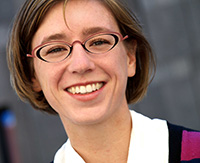
Philips Colour Kinetics, Boston
Susanne Seitinger, City Innovations Manager for Philips Color Kinetics, is responsible for leading the research and strategy around the impact of programmable LED lighting elements to create safe, inviting and responsive urban environments. Her combined background in architecture, urban planning and human-computer interaction is composed of research and design projects like the Digital Mile in Zaragoza, Spain and Urban Pixels, wireless LED pixels for ad-hoc media façades. LightBridge, her most recent project in honor of MIT’s 150th anniversary in Cambridge, Massachusetts, used new configurations of low-resolution displays and sensor-activated urban screens to showcase the potential of responsive infrastructures in future urban lighting plans.
Seitinger received a BA from Princeton University as well as a PhD, MS and MCP from MIT. Her PhD dissertation—Liberated Pixels: Alternative Narratives for Lighting Future Cities—explored the aesthetic and interactive potentials for future lighting and display infrastructures.
Portrait by Chris Pfaff.
Jon Settingsgard
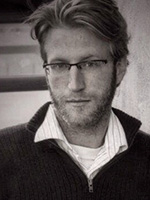
Daktronics
Jon Settingsgard is the product manager for Freeform LED Elements at Daktronics in Shanghai, China. He has been working on the development of LED elements with building façade integration and has projects installed in 17 countries. The majority of the recent work has been involved with low-resolution displays across multi-buildings. He has also spoken at SEGD, American Institute of Architects (AIA), and Singapore Institute of Architects (SIA).
Dr Gernot Tscherteu
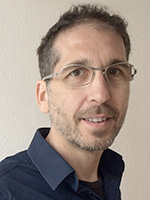
Media Architecture Institute, Vienna
Dr Gernot Tscherteu, interaction designer and researcher at realitylab.at. With a background in political science, Tscherteu has worked for the Austrian Academy of Science, University of Applied Arts, ZKM Karlsruhe, and the Vienna Museumsquarter. Tscherteu has curated numerous events in the field of media facades and media architecture. [
more]
Dr Alexander Wiethoff
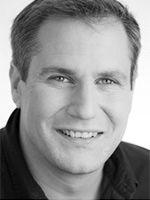
Ludwig Maximilian University, Munich
Alexander is a lecturer and researcher at the Univesity of Munich (LMU). His experience includes activities in commercial human-machine interface design practice, combined with various educational and research activities on media architecture at top-ranked national and international research universities and design schools. In his research work he pursued an interdisciplinary and user-centred approach, and it has led to high-level international publications, as well as a patent and a research award for his previous scientific efforts in the field of design process models for urban media façade development. His professional industrial experience in the areas of interaction design and human-machine interaction has been gained as an employee and freelance consultant, which has included work for fortune 500 clients, such as Intel, Samsung Mobile, Nokia and Siemens Enterprise Networks. Alexander holds a a Ph.D. in Computer Science from the Univesity of Munich (Ger), an M.A. in Interaction Design from the Interaction Design Institute Ivrea, Milan (I) and a B.A. in space&designstrategies from the University of Art and Industrial Design, Linz (A).
Contact
Organisers
Dr Gernot Tscherteu (Media Architecture Institute, realitylab)
Dr M. Hank Haeusler (Media Architecture Institute, UNSW)
Prof. Johan Bettum (Städelschule Frankfurt)
Special thanks to Helmut Bien (Projektbüro Luminale)
For further information, please contact:
Media Architecture Institute / Städelschule Architecture Class
Staedelschule, Dürerstrasse 10, 60596 Frankfurt
www.mediaarchitecture.org/mfs14fra/
Phone: +49 (0) 69 60 500 869
For any enquiries please write to
m.haeusler@unsw.edu.au.










 Founder, informance
Städelschule Architecture Class, Frankfurt
Mirco Becker is Guest Professor for Architecture and Performative Design at the Städelschule Architecture Class, Frankfurt. He holds an M.Arch degree from the AA. In 2012 he founded informance, a Berlin based design-integration consultancy for the building industry. A particular interest in computational geometry in architecture has been pursued before with Zaha Hadid Architects, Forster & Partners SMG and KPF’s Computational Geometry Group which he lead for 5 years as a Senior Associate Principal.
Founder, informance
Städelschule Architecture Class, Frankfurt
Mirco Becker is Guest Professor for Architecture and Performative Design at the Städelschule Architecture Class, Frankfurt. He holds an M.Arch degree from the AA. In 2012 he founded informance, a Berlin based design-integration consultancy for the building industry. A particular interest in computational geometry in architecture has been pursued before with Zaha Hadid Architects, Forster & Partners SMG and KPF’s Computational Geometry Group which he lead for 5 years as a Senior Associate Principal.
 Zumtobel
Bernd Clauß Dipl. Ing. (FH) Construction Management, Master Eng. in Project management, is heading the global façade business development for Zumtobel lighting based in Hong Kong. He has perennial experience and background in project management of façade construction projects. Amongst his wide experiences in LED façade & architecture lighting, he was project manager of the PLDA award-winning “Cheonan Galleria” in South Korea, the World Architecture Lighting Award winning “Rookery Building” of Chicago and guest speaker at a number of international events including Media Architecture Biennale 2010 Vienna.
Zumtobel
Bernd Clauß Dipl. Ing. (FH) Construction Management, Master Eng. in Project management, is heading the global façade business development for Zumtobel lighting based in Hong Kong. He has perennial experience and background in project management of façade construction projects. Amongst his wide experiences in LED façade & architecture lighting, he was project manager of the PLDA award-winning “Cheonan Galleria” in South Korea, the World Architecture Lighting Award winning “Rookery Building” of Chicago and guest speaker at a number of international events including Media Architecture Biennale 2010 Vienna.
 Media Architecture Institute, Sydney
University of New South Wales, Sydney
Dr M. Hank Haeusler Dipl.-Ing. (Fh) / PhD (SIAL/RMIT) is a Senior Lecturer in the School of Architecture at the University of New South Wales, Sydney, Australia. Haeusler is known as a researcher, educator, entrepreneur and designer in media architecture, digital technology, interaction design and ubiquitous computing and author of five books such as the seminal Media Facades – History, Technology, Content (avedition, 2009); several book chapters and conference papers. He has taught and lectured in Europe, Asia, North America and Australia at several universities and conferences and is director of the Media Architecture Institute, Vienna / Sydney.
Media Architecture Institute, Sydney
University of New South Wales, Sydney
Dr M. Hank Haeusler Dipl.-Ing. (Fh) / PhD (SIAL/RMIT) is a Senior Lecturer in the School of Architecture at the University of New South Wales, Sydney, Australia. Haeusler is known as a researcher, educator, entrepreneur and designer in media architecture, digital technology, interaction design and ubiquitous computing and author of five books such as the seminal Media Facades – History, Technology, Content (avedition, 2009); several book chapters and conference papers. He has taught and lectured in Europe, Asia, North America and Australia at several universities and conferences and is director of the Media Architecture Institute, Vienna / Sydney.
 Ludwig Maximilian University, Munich
Marius Hoggenmüller studies Media Informatics at the University of Munich (LMU). In his bachelor thesis, he investigated methods and tools for prototyping interactive media architecture along with a media facade installation in the Olympic Village in Munich (2013). Currently, he is working as an academic assistant at the chair of Media Informatics, inter alia developing the interactive content for the installation “Orchestrating the Depth of Light”.
Ludwig Maximilian University, Munich
Marius Hoggenmüller studies Media Informatics at the University of Munich (LMU). In his bachelor thesis, he investigated methods and tools for prototyping interactive media architecture along with a media facade installation in the Olympic Village in Munich (2013). Currently, he is working as an academic assistant at the chair of Media Informatics, inter alia developing the interactive content for the installation “Orchestrating the Depth of Light”.
 Ars Electronica Futurelab, Linz
Veronika Pauser is very experienced as a researcher in the fields of graphics computing and interaction design. Moreover she has deep knowledge about scientific processes, methodologies and a strong connection to the scientific community. In addition to her master studies in Interface Culture at the University of Art and Design Linz, she did a Master of Science in engineering in Digital Media at the University of Applied Sciences in Hagenberg. Due to her high interest in emerging topics on the nexus of art and technology, she became a member of the Ars Electronica Futurelab, where she is mainly responsible for project managing, especially in the project execution planning of EU FP7 projects. Aside this, the main focus of her work is the design of interactive installations and performances at the borderline of art and technology.
Ars Electronica Futurelab, Linz
Veronika Pauser is very experienced as a researcher in the fields of graphics computing and interaction design. Moreover she has deep knowledge about scientific processes, methodologies and a strong connection to the scientific community. In addition to her master studies in Interface Culture at the University of Art and Design Linz, she did a Master of Science in engineering in Digital Media at the University of Applied Sciences in Hagenberg. Due to her high interest in emerging topics on the nexus of art and technology, she became a member of the Ars Electronica Futurelab, where she is mainly responsible for project managing, especially in the project execution planning of EU FP7 projects. Aside this, the main focus of her work is the design of interactive installations and performances at the borderline of art and technology.
 Connecting Cities, Public Art Lab, Berlin
Susa Pop is an urban media curator and producer based in Berlin. In 2003 she founded Public Art Lab (PAL) as a network of experts from the fields of urban planning, new media arts and IT. Susa Pop is interested in creative community building through networking art projects that catalyse communication processes in the public space. She initiated most of the PAL projects like the Connecting Cities Network, Media Facades Festivals, Mobile Studios and Mobile Museums. She also speaks worldwide at conferences and workshops on urban media and is a lecturer at several universities like University of Potsdam / European Media Science, SRH Berlin / International Business Management, City planning, Leuphana University, Lueneburg. In 2012 Susa Pop published the book Urban Media Cultures.
Connecting Cities, Public Art Lab, Berlin
Susa Pop is an urban media curator and producer based in Berlin. In 2003 she founded Public Art Lab (PAL) as a network of experts from the fields of urban planning, new media arts and IT. Susa Pop is interested in creative community building through networking art projects that catalyse communication processes in the public space. She initiated most of the PAL projects like the Connecting Cities Network, Media Facades Festivals, Mobile Studios and Mobile Museums. She also speaks worldwide at conferences and workshops on urban media and is a lecturer at several universities like University of Potsdam / European Media Science, SRH Berlin / International Business Management, City planning, Leuphana University, Lueneburg. In 2012 Susa Pop published the book Urban Media Cultures.
 Lighting Design Collective
Tapio Rosenius is the founder of Lighting Design Collective (LDC). The company is based in three studios in Europe (Madrid, London & Helsinki) and operates globally with a network of collaborators. LDC specializes in customized architectural lighting solutions and light art with a uniquely integrated portfolio covering cutting-edge services such as digital content creation, software development and design strategies. Originally from Finland, Tapio is a designer and an artist with completed projects in 23 countries in the Europe, Africa, Asia and Middle East. His work has been recognized with numerous awards from the fields of lighting design and art. He holds a Master of Science in Light & Lighting degree from UCL Bartlett University, London and a Medianomi in Lighting Design from Tampere School of Arts and Communication, Finland. He regularly lectures at universities, trade fairs and professional conferences about lighting design for the built environment.
Lighting Design Collective
Tapio Rosenius is the founder of Lighting Design Collective (LDC). The company is based in three studios in Europe (Madrid, London & Helsinki) and operates globally with a network of collaborators. LDC specializes in customized architectural lighting solutions and light art with a uniquely integrated portfolio covering cutting-edge services such as digital content creation, software development and design strategies. Originally from Finland, Tapio is a designer and an artist with completed projects in 23 countries in the Europe, Africa, Asia and Middle East. His work has been recognized with numerous awards from the fields of lighting design and art. He holds a Master of Science in Light & Lighting degree from UCL Bartlett University, London and a Medianomi in Lighting Design from Tampere School of Arts and Communication, Finland. He regularly lectures at universities, trade fairs and professional conferences about lighting design for the built environment.

 DAM, Frankfurt
Peter Cachola Smal, architect and critic, is the director of Deutsches Architekturmuseum (DAM, German Architecture Museum). He has been a member of various juries, such as the European Union Prize for Contemporary Architecture – Mies van der Rohe Award, the European Architectural Photography Prize and the House of the Year award. He also organizes own awards at the DAM, such as the Internationaler Hochhaus Preis (International Highrise Award), the DAM Preis für Architektur In Deutschland (DAM Prize for Architecture in Germany) and the DAM Architecture Book Award. The range of exhibitions and programs at the DAM include topics as New Urbanity: the European City in the 21 Century, Urban Green: Contemporary European Landscape Architecture and projects with international partners such as Patent Construction: New Architecture made in Catalonia, Becoming Istanbul, Megacity Network: Korean Contemporary Architects and M8 in China: Contemporary Chinese Architects. He was the Commissary of the German Contribution to VII. International Architecture Biennale Sao Paulo in 2007, as well. Cachola, who has already been a member of the Jury for the European Prize for Urban Public Space in 2010 and 2012, will be so again in the 2014 edition.
DAM, Frankfurt
Peter Cachola Smal, architect and critic, is the director of Deutsches Architekturmuseum (DAM, German Architecture Museum). He has been a member of various juries, such as the European Union Prize for Contemporary Architecture – Mies van der Rohe Award, the European Architectural Photography Prize and the House of the Year award. He also organizes own awards at the DAM, such as the Internationaler Hochhaus Preis (International Highrise Award), the DAM Preis für Architektur In Deutschland (DAM Prize for Architecture in Germany) and the DAM Architecture Book Award. The range of exhibitions and programs at the DAM include topics as New Urbanity: the European City in the 21 Century, Urban Green: Contemporary European Landscape Architecture and projects with international partners such as Patent Construction: New Architecture made in Catalonia, Becoming Istanbul, Megacity Network: Korean Contemporary Architects and M8 in China: Contemporary Chinese Architects. He was the Commissary of the German Contribution to VII. International Architecture Biennale Sao Paulo in 2007, as well. Cachola, who has already been a member of the Jury for the European Prize for Urban Public Space in 2010 and 2012, will be so again in the 2014 edition.
 Philips Colour Kinetics, Boston
Susanne Seitinger, City Innovations Manager for Philips Color Kinetics, is responsible for leading the research and strategy around the impact of programmable LED lighting elements to create safe, inviting and responsive urban environments. Her combined background in architecture, urban planning and human-computer interaction is composed of research and design projects like the Digital Mile in Zaragoza, Spain and Urban Pixels, wireless LED pixels for ad-hoc media façades. LightBridge, her most recent project in honor of MIT’s 150th anniversary in Cambridge, Massachusetts, used new configurations of low-resolution displays and sensor-activated urban screens to showcase the potential of responsive infrastructures in future urban lighting plans.
Seitinger received a BA from Princeton University as well as a PhD, MS and MCP from MIT. Her PhD dissertation—Liberated Pixels: Alternative Narratives for Lighting Future Cities—explored the aesthetic and interactive potentials for future lighting and display infrastructures.
Portrait by Chris Pfaff.
Philips Colour Kinetics, Boston
Susanne Seitinger, City Innovations Manager for Philips Color Kinetics, is responsible for leading the research and strategy around the impact of programmable LED lighting elements to create safe, inviting and responsive urban environments. Her combined background in architecture, urban planning and human-computer interaction is composed of research and design projects like the Digital Mile in Zaragoza, Spain and Urban Pixels, wireless LED pixels for ad-hoc media façades. LightBridge, her most recent project in honor of MIT’s 150th anniversary in Cambridge, Massachusetts, used new configurations of low-resolution displays and sensor-activated urban screens to showcase the potential of responsive infrastructures in future urban lighting plans.
Seitinger received a BA from Princeton University as well as a PhD, MS and MCP from MIT. Her PhD dissertation—Liberated Pixels: Alternative Narratives for Lighting Future Cities—explored the aesthetic and interactive potentials for future lighting and display infrastructures.
Portrait by Chris Pfaff.
 Daktronics
Jon Settingsgard is the product manager for Freeform LED Elements at Daktronics in Shanghai, China. He has been working on the development of LED elements with building façade integration and has projects installed in 17 countries. The majority of the recent work has been involved with low-resolution displays across multi-buildings. He has also spoken at SEGD, American Institute of Architects (AIA), and Singapore Institute of Architects (SIA).
Daktronics
Jon Settingsgard is the product manager for Freeform LED Elements at Daktronics in Shanghai, China. He has been working on the development of LED elements with building façade integration and has projects installed in 17 countries. The majority of the recent work has been involved with low-resolution displays across multi-buildings. He has also spoken at SEGD, American Institute of Architects (AIA), and Singapore Institute of Architects (SIA).
 Media Architecture Institute, Vienna
Dr Gernot Tscherteu, interaction designer and researcher at realitylab.at. With a background in political science, Tscherteu has worked for the Austrian Academy of Science, University of Applied Arts, ZKM Karlsruhe, and the Vienna Museumsquarter. Tscherteu has curated numerous events in the field of media facades and media architecture. [more]
Media Architecture Institute, Vienna
Dr Gernot Tscherteu, interaction designer and researcher at realitylab.at. With a background in political science, Tscherteu has worked for the Austrian Academy of Science, University of Applied Arts, ZKM Karlsruhe, and the Vienna Museumsquarter. Tscherteu has curated numerous events in the field of media facades and media architecture. [more]
 Ludwig Maximilian University, Munich
Alexander is a lecturer and researcher at the Univesity of Munich (LMU). His experience includes activities in commercial human-machine interface design practice, combined with various educational and research activities on media architecture at top-ranked national and international research universities and design schools. In his research work he pursued an interdisciplinary and user-centred approach, and it has led to high-level international publications, as well as a patent and a research award for his previous scientific efforts in the field of design process models for urban media façade development. His professional industrial experience in the areas of interaction design and human-machine interaction has been gained as an employee and freelance consultant, which has included work for fortune 500 clients, such as Intel, Samsung Mobile, Nokia and Siemens Enterprise Networks. Alexander holds a a Ph.D. in Computer Science from the Univesity of Munich (Ger), an M.A. in Interaction Design from the Interaction Design Institute Ivrea, Milan (I) and a B.A. in space&designstrategies from the University of Art and Industrial Design, Linz (A).
Ludwig Maximilian University, Munich
Alexander is a lecturer and researcher at the Univesity of Munich (LMU). His experience includes activities in commercial human-machine interface design practice, combined with various educational and research activities on media architecture at top-ranked national and international research universities and design schools. In his research work he pursued an interdisciplinary and user-centred approach, and it has led to high-level international publications, as well as a patent and a research award for his previous scientific efforts in the field of design process models for urban media façade development. His professional industrial experience in the areas of interaction design and human-machine interaction has been gained as an employee and freelance consultant, which has included work for fortune 500 clients, such as Intel, Samsung Mobile, Nokia and Siemens Enterprise Networks. Alexander holds a a Ph.D. in Computer Science from the Univesity of Munich (Ger), an M.A. in Interaction Design from the Interaction Design Institute Ivrea, Milan (I) and a B.A. in space&designstrategies from the University of Art and Industrial Design, Linz (A).
